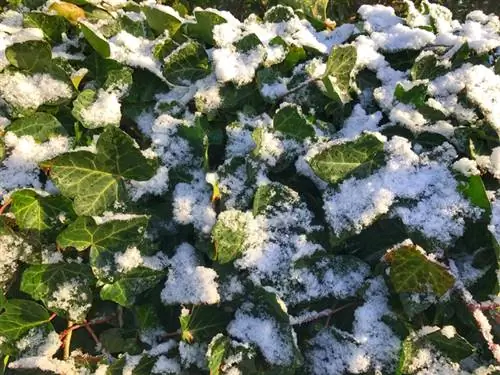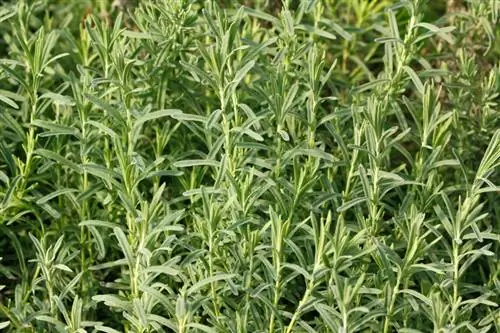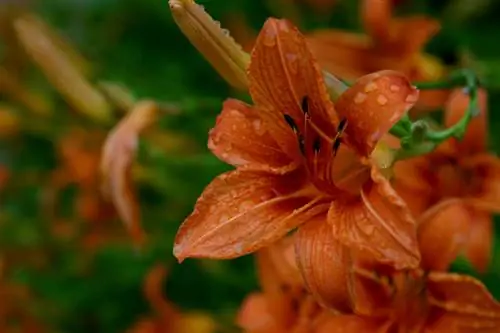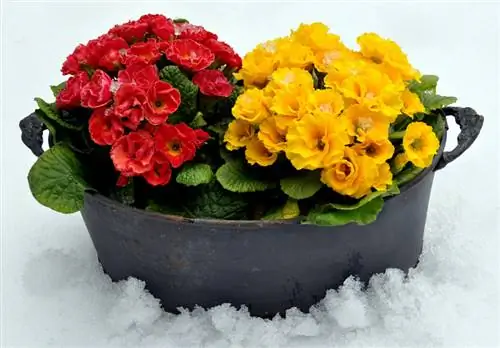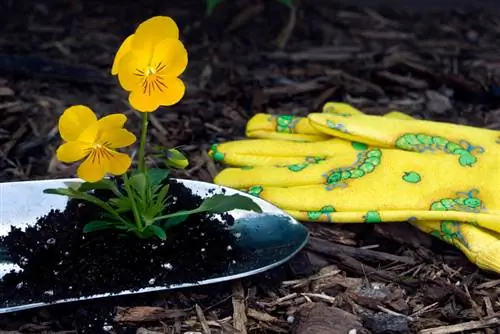- Author admin [email protected].
- Public 2023-12-16 16:46.
- Last modified 2025-01-23 11:20.
Ivy (Hedera helix) is a native plant that is completely hardy. It is well adapted to our temperatures and can therefore tolerate frost without any problems. A bigger problem, however, is the water supply in winter. In contrast to common ivy, variegated varieties are not always as frost-tolerant and should rather be kept in pots.
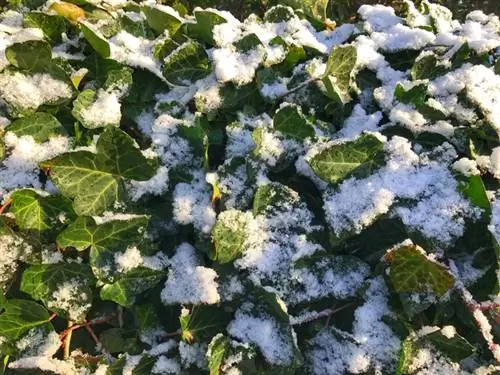
Is ivy winter-hardy and frost-tolerant?
Is ivy hardy? Common ivy (Hedera helix) is completely hardy and tolerates frost without any problems. Variegated varieties, on the other hand, are sometimes sensitive to frost and should be kept in pots. It is important to provide plants with sufficient water, even in winter.
Common ivy is absolutely hardy
Common ivy in the garden is hardy and does not require any winter protection. It is only advisable to protect young plants from frost in the first year outdoors. The following are available as winter protection:
- brushwood
- Fir branches
- Leaves
- Mulch cover
If ivy is grown as a climbing plant on fences, frost damage occasionally occurs, but at best it endangers the privacy. To winterize these plants, simply place a few pine branches between the ivy vines.
Avoid fertilizing outdoor ivy after July. The additional nutrients cause new shoots to form that do not harden until winter. These freeze off in severe frosts.
Colorful varieties are not always winter-hardy
Colorful varieties of ivy are not as hardy as common ivy. They usually only tolerate sub-zero temperatures between -5 and -10 degrees. Some species do not survive frosts at all. If you are unsure, you should seek advice from a gardening professional.
Ivy varieties that are not completely hardy should always be grown in a bucket or pot on the balcony and terrace. Then you can protect them better from frost by covering them. You can also place the planter on an insulating surface such as wood (€9.00 on Amazon) or Styrofoam.
Overwintering ivy as a houseplant
Ivy that you care for as a houseplant should be grown in the same place all year round. It is not necessary to lower temperatures as long as you water sufficiently. However, do not place the plants too close to heaters in winter.
You should not put plants that have always been indoors outside in winter. They need a longer period of acclimatization to harden up in order to survive sub-zero temperatures unscathed.
Don’t forget to water in winter
Severer than frost, dryness in winter causes problems for ivy. If there is only a little rainfall, the soil dries out too much and the plant dries up. You should therefore water ivy regularly even in winter. This applies to outdoor plants as well as ivy in pots.
It is watered on frost-free days, and as penetratingly as possible. But make sure that there is no waterlogging.
The older the ivy is, the deeper the roots reach into the ground. For very old plants, watering is usually not necessary.
Tip
If you care for ivy in a box on the balcony, some winter protection can be useful. You winterize the climber by wrapping the planter with burlap or bubble wrap. However, regular watering on frost-free days is more important than winter protection.

